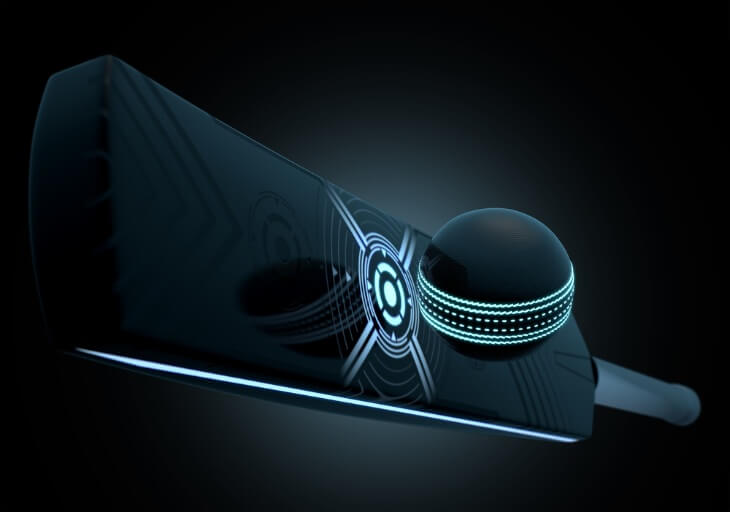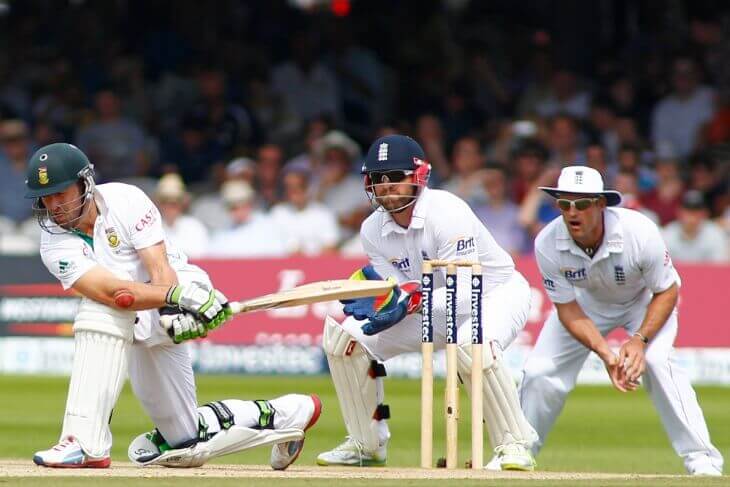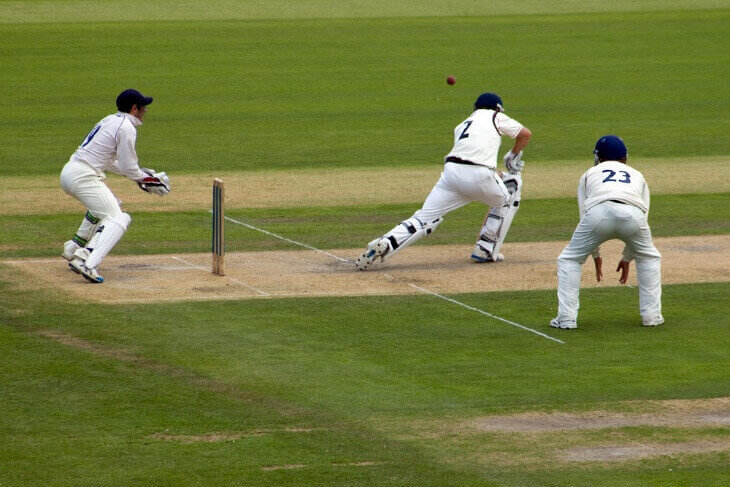- Introduction
- Technology in Cricket
- The Evolution of Cricket Technology
- Hawk-Eye Technology: A Game Changer
- Snickometer: Unraveling the Fine Details
- Hot Spot: The Heat of the Action
- Decision Review System (DRS): Umpiring Aid
- Ball Tracking Systems: Beyond the Naked Eye
- Stump Microphones: Capturing the On-Field Banter
- Wearable Technology for Players
- Data Analytics in Cricket
- Innovations in Ground Technology
- Conclusion: Impact and Future of Cricket Technology
Introduction
Cricket, a sport steeped in tradition, has witnessed a remarkable transformation in recent years. Gone are the days when it relied solely on the discerning eyes of umpires and the honesty of players. Today, technology has firmly entrenched itself in the game, aiding decision-making, scrutinizing every detail, and providing fans with a whole new level of insight. In this article, we'll delve into the fascinating world of technology in cricket, from the introduction of Hawk-Eye to the nuances of the Snickometer.
Technology in Cricket
Traditionally, cricket was a sport of gentlemanly conduct, where players upheld the spirit of fair play. Umpires, armed with nothing more than their keen eyes and intuition, made pivotal decisions that could sway the course of a match. However, with the advent of technology, cricket has joined the ranks of sports that embrace innovation to enhance accuracy and fairness.
The use of technology in cricket began as a means to eliminate errors in umpiring decisions. Initially, it was met with skepticism, with purists arguing that it would rob the game of its essence. But as time passed, the advantages became increasingly evident.
The Evolution of Cricket Technology
The first chapter in this technological revolution was the introduction of televisions and slow-motion replays. This allowed spectators to witness key moments from multiple angles and at varying speeds. It was a revelation. Controversial decisions and spectacular feats could be dissected and analysed with precision.
The real game-changer, however, came with Hawk-Eye technology. Developed in the early 2000s, Hawk-Eye offered a new dimension to cricket. This ball-tracking system used a network of high-speed cameras to follow the trajectory of the ball from bowler's hand to batsman's crease. It could predict the path the ball would have taken if not for the batsman's intervention. Hawk-Eye became the ultimate tool for assessing LBW (Leg Before Wicket) decisions and tracking the trajectory of balls for close catches.
Hawk-Eye Technology: A Game Changer
Hawk-Eye, the brainchild of British computer scientist Dr. Paul Hawkins, made its debut in cricket during the 2001 Test series between England and Pakistan. From that moment, cricket entered a new era. The reliance on a human umpire's judgment for LBW decisions was supplemented by a technology that could provide a highly accurate prediction of the ball's path.
What made Hawk-Eye stand out was its objectivity. It didn't carry biases or fatigue. It simply presented the facts. And, in a sport where decisions could determine the outcome of a match, that objectivity was invaluable. The players soon embraced it too. Batsmen began using Hawk-Eye to review LBW decisions they deemed unfair, while bowlers would eagerly look at the screen, hoping for that precious confirmation of their accuracy.
Over the years, Hawk-Eye has evolved and become an integral part of the modern cricket experience. It's not just limited to LBW decisions anymore. It provides insights into the tracking of deliveries, showcasing the bowler's skills and the batsman's prowess in handling tricky deliveries. Moreover, it adds an element of excitement for fans, who now eagerly anticipate the animation showing the ball's journey.
Snickometer: Unraveling the Fine Details
If Hawk-Eye brought precision to LBW decisions, the Snickometer addressed another critical aspect of the game - edges and catches. Developed by British inventor Allan Plaskett, this technology is as intricate as it is valuable. Snickometer combines audio and visual elements to detect whether the ball has grazed the edge of the bat or any other equipment held by the batsman.
When a batsman nicks the ball, it creates a small sound, often imperceptible to the naked ear in the midst of the crowd's roar. Snickometer, however, amplifies these faint noises and correlates them with the visual footage of the event. The result is a detailed graphical representation that shows not just whether the ball made contact with the bat but also the precise moment it did.
Snickometer is particularly vital for close catch decisions. Did the ball brush the edge of the bat on its way to the wicketkeeper? Did it graze the gloves of the fielder? These questions, which once relied solely on the umpire's discretion, are now answered with scientific accuracy.
Hot Spot: The Heat of the Action
Cricket, as they say, is a game of fine margins. Often, the difference between bat and ball is a mere flicker, an almost imperceptible touch. Enter Hot Spot, a technology that turned up the heat in cricket, quite literally.
Hot Spot utilises thermal imaging cameras to detect the friction generated when the ball makes contact with any object, be it the bat, the pads, or even the gloves. It captures the temperature variations at these points, presenting them as bright spots on the screen. This revolutionary technology has been instrumental in resolving contentious decisions, especially those involving edges.
The beauty of Hot Spot lies in its objectivity. It doesn't depend on sound or the umpire's judgment; it relies on pure science. If there's a faint mark on Hot Spot, it's undeniable evidence of contact. This has brought an added layer of fairness to the game, particularly in cases where the naked eye might have missed something crucial.
Hot Spot's role extends beyond the field, too. It has become a talking point for cricket enthusiasts, sparking debates and discussions about every faint mark and flicker of heat on the screen. In the age of technology, cricket is not just about the game itself; it's about the analysis and scrutiny that follows each match.

Decision Review System (DRS): Umpiring Aid
With technology making such a profound impact on the game, it was only a matter of time before it was officially integrated into the decision-making process. The Decision Review System, or DRS, was introduced to address this need and further enhance the accuracy of on-field decisions.
DRS allows teams to challenge the umpire's call on a wide range of decisions, from LBWs to catches. It involves a combination of Hawk-Eye, Hot Spot, Snickometer, and sometimes even audio recordings from stump microphones. When a player challenges an umpire's decision, the DRS technology is brought into play, and the third umpire, armed with all the available data, reviews the decision.
The introduction of DRS has led to moments of high drama and tension. Batsmen and bowlers wait anxiously for the outcome of their challenges, while spectators watch in anticipation. It has not only added a layer of strategy to the game but also made it more transparent and accountable.
Ball Tracking Systems: Beyond the Naked Eye
In the world of cricket technology, precision is key, and ball tracking systems have taken this precision to new heights. These systems use advanced cameras and software to trace the path of the cricket ball from the moment it leaves the bowler's hand to its impact on the batsman's bat or body.
One of the most well-known ball tracking systems is Hawk-Eye, which we discussed earlier. However, there are other systems like Virtual Eye and UltraEdge, each offering its own set of features and capabilities. These systems not only help in reviewing LBW decisions but also provide crucial insights into the bowler's performance. They can track the speed, trajectory, and movement of the ball, allowing commentators and analysts to dissect the action in minute detail.
Ball tracking systems have become an integral part of cricket broadcasts, enriching the viewing experience for fans. They enable viewers to see how much a delivery swung or spun, how fast it was bowled, and whether it deviated off the pitch. This technology has not only enhanced the understanding of the game but has also given cricket enthusiasts a newfound appreciation for the skill and artistry of bowlers.
Stump Microphones: Capturing the On-Field Banter
Cricket is not just about bat and ball; it's also about the on-field banter, camaraderie, and the occasional sledging between players. Stump microphones have allowed fans to eavesdrop on these conversations, bringing them closer to the action than ever before.
Stump microphones are positioned near the wicket, picking up the sounds of the game – the thud of the ball hitting the bat, the shouts of fielders, and, perhaps most intriguingly, the conversations between the batsmen and fielders. While it's always been known that cricket players engage in witty repartees and strategic discussions on the field, stump microphones have made these exchanges public.
This technology has had its fair share of controversy, as some conversations captured on the microphones have sparked debates about sportsmanship and player conduct. Nevertheless, it has added a layer of authenticity to the game, allowing fans to feel like they're right there on the pitch, sharing the intensity and emotions of the players.
Wearable Technology for Players
Cricket isn't just about what you see on the screen; it's also about what happens behind the scenes. Wearable technology has made its way into the sport, offering players a wealth of data and insights to improve their performance.
One of the most common wearables used in cricket is the GPS tracking device. Players wear these small, lightweight devices during training sessions and matches. They help coaches and analysts monitor a player's movement on the field. From the distance covered while fielding to the speed at which a bowler runs in to deliver a ball, these devices provide a treasure trove of information.
For batsmen, there are smart cricket bats equipped with sensors that capture data on shot power, speed, and precision. Bowlers can benefit from wearables that track their arm speed and action, helping them refine their techniques. Even wicketkeepers can use technology to improve their glovework and reactions.
In addition to performance analysis, wearable technology also plays a crucial role in injury prevention. It allows players and medical staff to monitor workload and assess fatigue levels, reducing the risk of overuse injuries.
Data Analytics in Cricket
Cricket has moved well beyond traditional scorecards and averages. Data analytics has become a game-changer, providing teams with a competitive edge. Every aspect of the game, from player statistics to match strategies, is now underpinned by data-driven insights.
Teams employ a team of analysts who crunch numbers and statistics to identify patterns and trends. They use software to break down the opposition's strengths and weaknesses, helping captains make informed decisions on field placements and bowling changes. Batsmen and bowlers study their own data to identify areas for improvement.
But it's not just about in-game decisions. Analytics also plays a significant role in player recruitment. Teams scout for talent by analysing player statistics from various levels of the game. They look for those who show promise and potential, even before they make their debut on the international stage.
Moreover, for fans, data analytics has brought a new layer of engagement. Fantasy cricket leagues have sprung up, allowing fans to pick their dream teams based on player statistics. This has added an extra element of excitement to cricket, as fans compete against each other based on their knowledge of the game.
Innovations in Ground Technology
Cricket may be played on lush green fields, but the surfaces underneath have witnessed their fair share of technological innovations. The quality of the pitch can significantly influence the outcome of a match, and ground technology has been instrumental in achieving pitch perfection.

One notable advancement is the use of pitch monitoring systems. These systems rely on sensors embedded in the pitch to measure parameters like moisture content, hardness, and evenness. Groundsmen can then use this data to prepare a pitch that suits the desired style of play – whether it's a batsman-friendly track with even bounce or a bowler's paradise with unpredictable movement.
Another remarkable development is the use of a subsurface aeration system. This involves a network of pipes buried beneath the pitch, which can be used to control moisture levels and temperature. It ensures that pitches remain consistent throughout a match, reducing the impact of external factors like weather conditions.
Modern stadiums have also embraced technology in their infrastructure. LED floodlights have replaced traditional ones, providing superior visibility for both players and spectators during day-night matches. High-definition screens and advanced sound systems enhance the overall viewing experience for fans in the stands.
These innovations may not always be apparent to the casual observer, but they play a crucial role in ensuring fair and competitive matches. After all, cricket is as much about the conditions as it is about the players.
Conclusion: Impact and Future of Cricket Technology
As we wrap up our journey through the world of technology in cricket, it's clear that the game has undergone a remarkable transformation. From the introduction of Hawk-Eye to the insights provided by data analytics, technology has revolutionized every aspect of cricket.
The impact has been profound, making the game fairer, more engaging, and accessible to a global audience. Fans can now immerse themselves in the intricate details of the game, and players have access to tools that enable them to hone their skills to perfection.
Looking to the future, it's safe to say that technology will continue to play a central role in cricket's evolution. Innovations like virtual reality training, artificial intelligence-assisted coaching, and further advancements in wearable technology are on the horizon. These developments promise to take the game to new heights, ensuring that cricket remains a dynamic and ever-evolving sport.
For more information:
- UK's Role in the Evolution of Cricket Rules
- The Role of the Umpire in Cricket
- Safety Innovations: Helmets, Pads, and Other Gear


